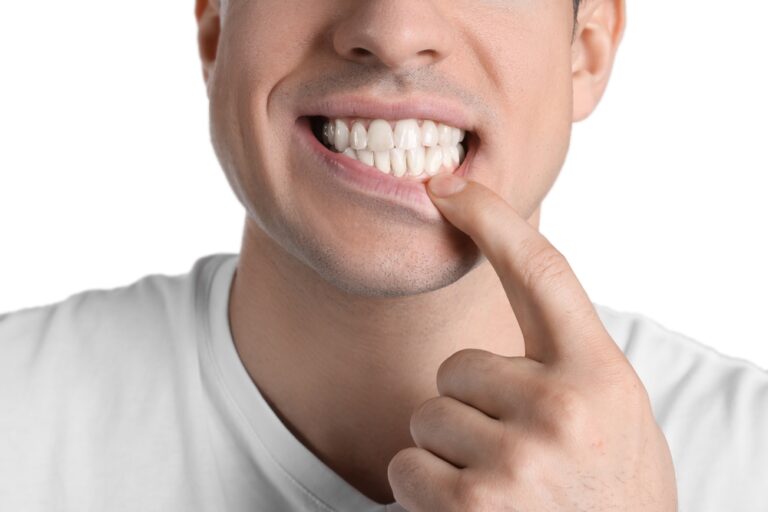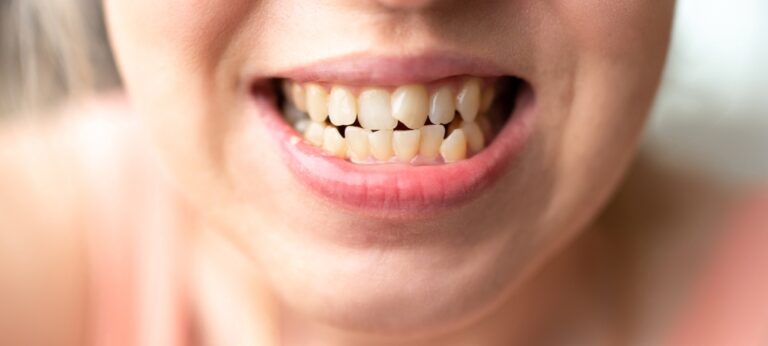Do your teeth move in your 40s? It’s a common question that many people ask as they get older. The short answer is yes, your teeth can shift and move in your 40s and beyond. This can happen for a variety of reasons, including natural aging, genetics, and certain dental conditions.
One of the main reasons why teeth can shift in your 40s is due to changes in your mouth and jawbone. As you age, your jawbone can start to shrink, which can cause your teeth to become loose and shift out of place. Additionally, if you’ve lost teeth due to injury or decay, this can also cause your remaining teeth to shift as they try to fill in the gaps. It’s important to note that even if you’ve had braces or other orthodontic treatment in the past, your teeth can still shift as you get older.
Understanding Teeth Movement
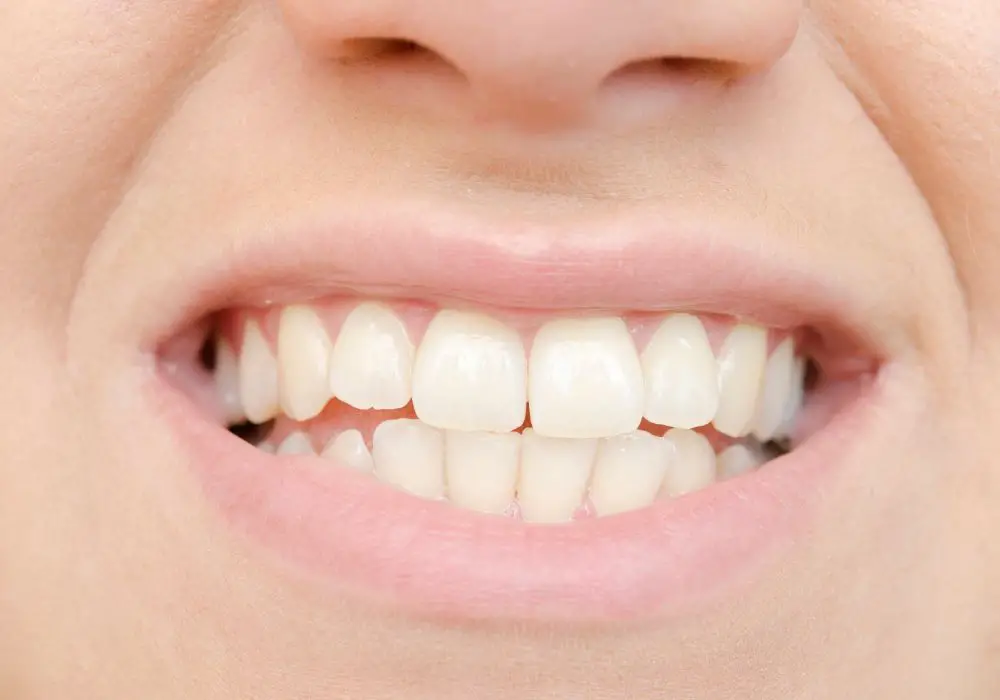
As we age, our bodies undergo several changes, and our teeth are no exception. Even if you had straight teeth all your life or achieved the perfect alignment with braces, your teeth will begin to shift after age 40. In this section, we will explore the reasons behind teeth movement and how you can prevent it.
Causes of Teeth Movement
There are several reasons why your teeth may shift as you age. Some of the most common causes include:
- Muscle Relaxation: The muscles in your mouth and face can put pressure on your teeth, causing them to shift slightly. As you age, these muscles may begin to relax, leading to more significant changes in your tooth alignment.
- Gum Disease: Bacteria living under your gum tissue can cause inflammation and hinder the bone that holds your teeth in place. This can result in your teeth shifting or becoming loose.
- Wear and Tear: Over time, the wear and tear on your teeth can cause them to become thinner, giving them more space to move around.
Prevention of Teeth Movement
While some degree of teeth movement is natural as you age, there are several things you can do to prevent significant changes in your tooth alignment. Some tips to keep your teeth in place include:
- Maintain Good Oral Hygiene: Brushing, flossing, and regular dental checkups can help prevent gum disease and keep your teeth healthy.
- Wear a Retainer: If you have had braces or other orthodontic treatment, wearing a retainer can help keep your teeth in their new positions.
- Avoid Bad Habits: Habits like nail-biting or chewing on hard objects can put pressure on your teeth and cause them to shift.
- Consider Orthodontic Treatment: If your teeth have already shifted significantly, orthodontic treatment like braces or clear aligners can help realign them.
In conclusion, teeth movement is a natural part of aging, but there are several things you can do to prevent significant changes in your tooth alignment. By maintaining good oral hygiene, wearing a retainer, avoiding bad habits, and considering orthodontic treatment, you can keep your teeth healthy and in place for years to come.
Teeth Movement in Your 40s
As you age, your teeth may begin to shift and move. This is a natural process that occurs as the years pass. Even if you’ve had orthodontic treatment in the past, your teeth may still shift and move over time. In fact, it’s common for adults to experience some degree of teeth movement in their 40s.
There are several reasons why teeth movement occurs in your 40s. One reason is that the muscles in your mouth begin to relax as you age. This can cause your teeth to spread apart, leading to gaps and spaces between your teeth. Another reason is that the bone density in your jaw may decrease over time, which can cause your teeth to shift and move.
If you’re experiencing teeth movement in your 40s, there are several things you can do to help prevent further shifting and maintain the alignment of your teeth. Here are some tips:
- Wear your retainer: If you’ve had braces or other orthodontic treatment in the past, wearing your retainer as directed by your orthodontist can help prevent your teeth from shifting.
- Practice good oral hygiene: Brushing and flossing regularly can help keep your teeth healthy and prevent gum disease, which can cause your teeth to shift.
- Visit your dentist regularly: Regular dental checkups can help detect any issues with your teeth or gums early on, which can help prevent further shifting.
- Consider orthodontic treatment: If your teeth have shifted significantly, orthodontic treatment may be necessary to realign your teeth and prevent further shifting.
In conclusion, teeth movement in your 40s is a natural process that occurs as you age. However, there are several things you can do to help prevent further shifting and maintain the alignment of your teeth. By wearing your retainer, practicing good oral hygiene, visiting your dentist regularly, and considering orthodontic treatment if necessary, you can help keep your teeth healthy and beautiful for years to come.
Causes of Teeth Shifting in Middle Age
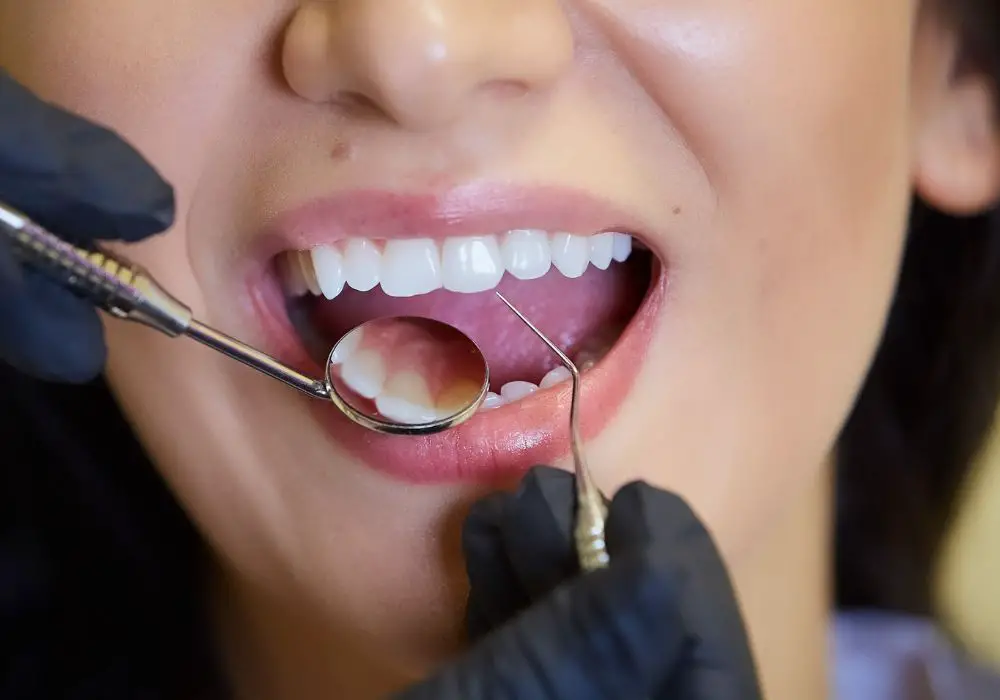
As you reach your 40s, you may start to notice changes in your teeth. Teeth shifting is a common occurrence in middle age, and it can be caused by a variety of factors. In this section, we will discuss some of the most common causes of teeth shifting in middle age.
Natural Aging Process
As you age, your teeth may shift due to the natural aging process. The bone density in your jaw decreases over time, which can cause your teeth to shift and move. Additionally, the ligaments that hold your teeth in place may become weaker, which can also contribute to teeth shifting.
Periodontal Disease
Periodontal disease is a common dental condition that affects many adults. This disease can cause the gums to recede, which can lead to teeth shifting. As the gums recede, the roots of the teeth become exposed, which can cause them to become loose and shift out of place.
Hormonal Changes
Hormonal changes can also contribute to teeth shifting in middle age. Women may experience hormonal changes during menopause, which can cause changes in the bone density in the jaw. This can lead to teeth shifting and movement.
In summary, teeth shifting is a common occurrence in middle age, and it can be caused by a variety of factors. The natural aging process, periodontal disease, and hormonal changes can all contribute to teeth shifting. If you are experiencing teeth shifting, it is important to speak with your dentist to determine the cause and explore treatment options.
Symptoms of Teeth Shifting
As you age, your teeth may start to shift, and you may not even realize it until it’s too late. Here are some symptoms to watch out for:
- Gaps: One of the most noticeable symptoms of teeth shifting is the formation of gaps between your teeth. These gaps can be unsightly and can also affect your bite.
- Crowding: If your teeth start to shift, they may become crowded, making it difficult to clean between them. This can lead to tooth decay and gum disease.
- Bite changes: If you notice changes in your bite, such as an overbite or underbite, it may be a sign that your teeth are shifting.
- Pain and sensitivity: As your teeth shift, they may become sensitive or painful. This can be caused by the pressure that is being placed on them.
- Difficulty chewing: If your teeth are shifting, you may find it difficult to chew your food properly. This can lead to digestive issues and other health problems.
If you notice any of these symptoms, it’s important to see your dentist as soon as possible. Your dentist can help you determine the cause of your teeth shifting and recommend the best course of treatment.
How to Prevent Teeth Shifting
If you’re in your 40s, you may be wondering if your teeth will start to shift. The good news is that with proper care and attention, you can prevent your teeth from moving out of alignment. Here are some tips to help you keep your teeth in their proper positions.
Regular Dental Check-ups
One of the most important things you can do to prevent teeth shifting is to visit your dentist regularly. Your dentist can identify any issues that could cause your teeth to shift, such as gum disease or tooth decay. If you have any of these problems, your dentist can treat them before they cause your teeth to move.
Oral Hygiene Practices
Good oral hygiene is also essential for preventing teeth shifting. Make sure you brush your teeth twice a day and floss once a day. Use a fluoride toothpaste and a soft-bristled toothbrush to clean your teeth and gums gently. Avoid brushing too hard, as this can damage your gums and cause your teeth to shift.
Teeth Straightening Options
If you have crooked teeth, you may be at a higher risk of teeth shifting. In this case, you may want to consider teeth straightening options. There are several options available, including traditional braces, clear aligners, and lingual braces. Talk to your dentist or orthodontist to find out which option is best for you.
In summary, preventing teeth shifting is all about taking care of your teeth and gums. Regular dental check-ups, good oral hygiene practices, and teeth straightening options can help you keep your teeth in their proper positions. By following these tips, you can maintain a healthy, beautiful smile for years to come.
Impact of Ignoring Teeth Shifting
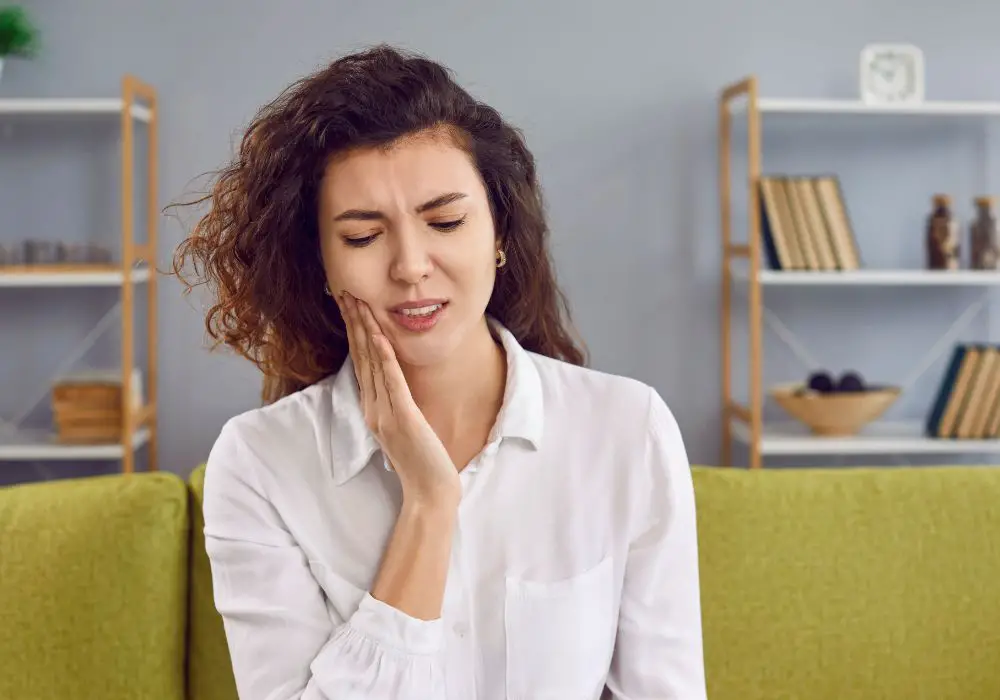
Ignoring teeth shifting can have serious consequences, especially as you age. Here are some potential risks of neglecting to address shifting teeth:
Bite Problems
When your teeth shift, it can cause bite problems, making it difficult to chew and speak properly. This can lead to jaw pain and headaches, which can be debilitating.
Gum Disease
Shifting teeth can also lead to gum disease. When teeth move, they create pockets where bacteria can accumulate, leading to infection and inflammation of the gums. Gum disease can cause tooth loss and even affect your overall health.
Tooth Decay
Shifting teeth can also make it difficult to clean your teeth properly, leading to tooth decay. When teeth are misaligned, it can be challenging to reach certain areas with your toothbrush and floss, allowing bacteria to thrive.
Facial Changes
Ignoring teeth shifting can also lead to facial changes. As your teeth move, it can affect the structure of your face, causing changes in your appearance. This can lead to self-consciousness and affect your overall confidence.
Orthodontic Treatment
If you ignore teeth shifting, you may require orthodontic treatment later in life. This can be more challenging and time-consuming than addressing the issue earlier. It can also be more expensive, as insurance may not cover orthodontic treatment for adults.
Overall, ignoring teeth shifting can have serious consequences. It is essential to address any shifting teeth as soon as possible to avoid complications down the line.
Consulting a Dental Professional
If you’re experiencing teeth shifting in your 40s, it’s important to consult a dental professional. They can help determine the cause of the shifting and recommend appropriate treatment options. Here are some reasons why you should consider consulting a dental professional:
1. To Identify the Cause of Shifting
A dental professional can examine your teeth and identify the cause of the shifting. They can determine if it’s due to natural aging or if there’s an underlying issue such as gum disease, tooth decay, or bite problems. Identifying the cause is important for determining the appropriate treatment.
2. To Discuss Treatment Options
Once the cause of the shifting has been identified, a dental professional can discuss treatment options with you. This may include orthodontic treatment such as braces or clear aligners, or other interventions such as dental implants or bridges. They can also provide advice on how to prevent further shifting in the future.
3. To Maintain Oral Health
Consulting a dental professional can help you maintain good oral health. They can provide advice on proper oral hygiene practices and recommend regular dental check-ups to ensure your teeth and gums are healthy. This can help prevent future shifting and other dental problems.
In summary, consulting a dental professional is an important step if you’re experiencing teeth shifting in your 40s. They can help identify the cause, discuss treatment options, and provide advice on maintaining good oral health.
Frequently Asked Questions
Can teeth move in your 40s?
Yes, teeth can move in your 40s. As you age, your teeth can shift due to various factors such as natural wear and tear, loss of jawbone density, and changes in the muscles and ligaments that support your teeth.
Why do teeth shift with age?
Teeth shift with age due to natural wear and tear, loss of jawbone density, and changes in the muscles and ligaments that support your teeth. Additionally, if you have lost teeth, the remaining teeth may shift to fill in the gap, causing misalignment.
How can I prevent my teeth from moving without a retainer?
To prevent your teeth from moving without a retainer, you can practice good oral hygiene by brushing and flossing regularly. You can also avoid habits such as grinding your teeth or biting your nails, which can cause teeth to shift. Additionally, maintaining a healthy diet and avoiding sugary foods and drinks can help prevent tooth decay and gum disease, which can lead to tooth loss and misalignment.
Do teeth continue to shift after braces?
Teeth can continue to shift after braces if you do not wear your retainer as directed by your orthodontist. Your retainer helps to keep your teeth in their new position after your braces are removed. If you do not wear your retainer, your teeth may shift back to their original position.
What are the signs that your teeth are shifting?
The signs that your teeth are shifting include a change in the way your bite feels, gaps between your teeth, and teeth that appear crooked or crowded. You may also notice that your teeth feel loose or that you have difficulty biting or chewing.
At what age do teeth typically stop shifting?
Teeth typically stop shifting in your late teens or early twenties, when your jawbone stops growing. However, teeth can continue to shift throughout your life due to various factors such as natural wear and tear, loss of jawbone density, and changes in the muscles and ligaments that support your teeth.

